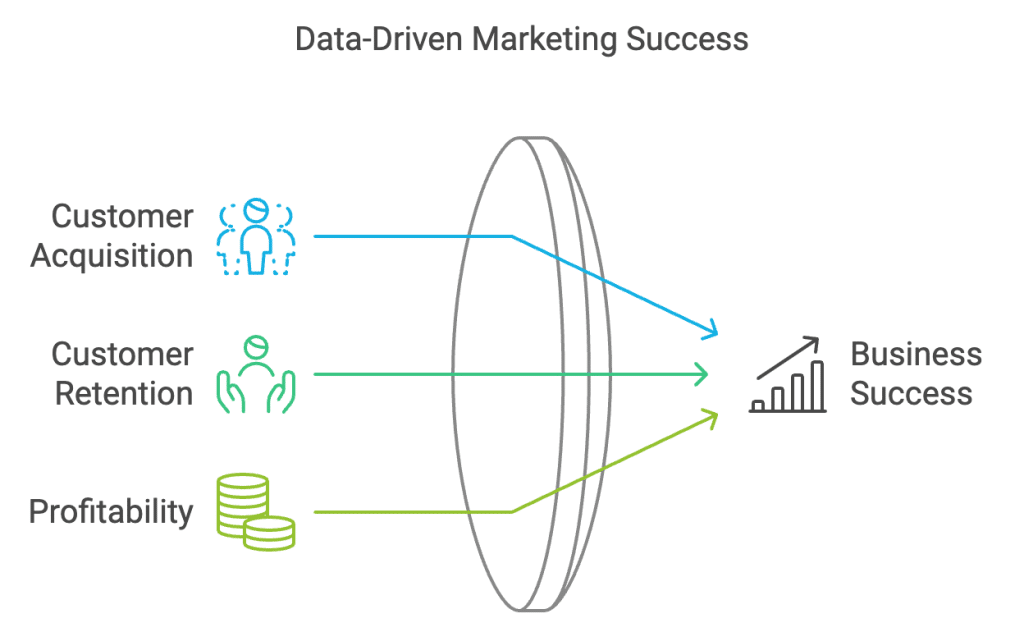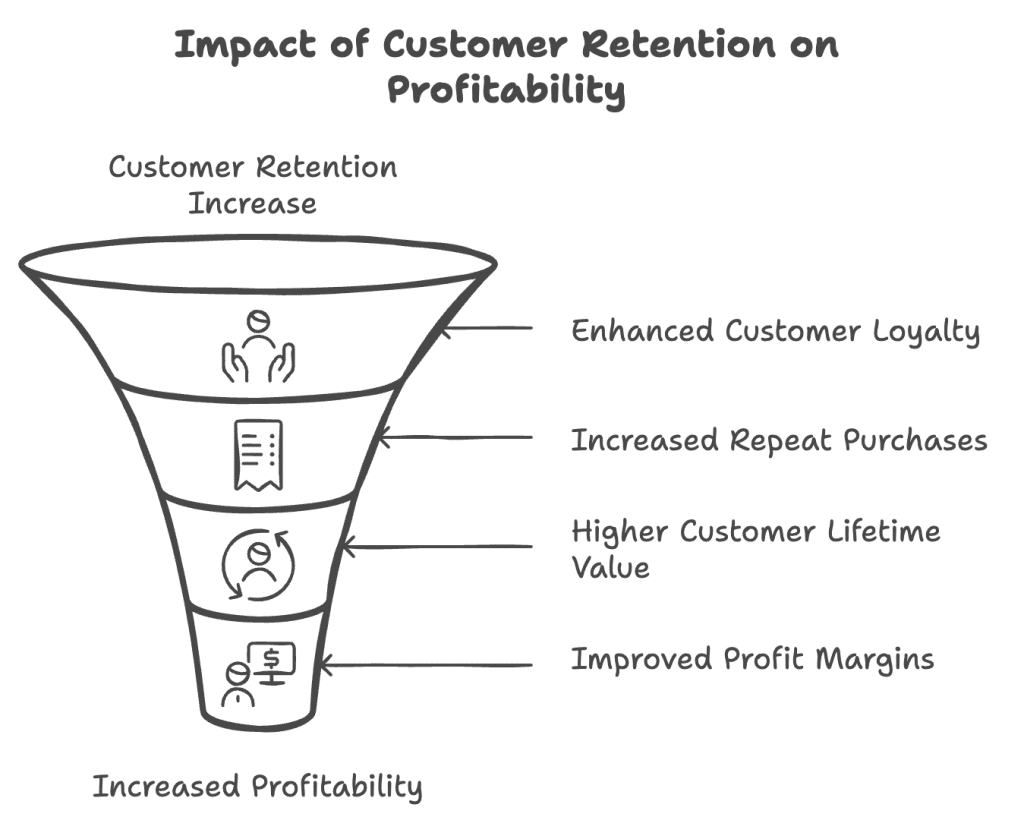- Home
- About
- Services
-
-
- Marketing and Identity
- Content Marketing
- Brand Identity
- Marketing Analytics
- Online Reputation Management
-
- Communications
- Public Relations Firm
- Crisis Management
-
- Case Studies
- Insights
Let’s call a spade a spade, ranking your brand on Google search can be daunting. So then begs the question, “How Can I Rank Higher on Google?”. Well don’t fret, don’t spiral, don’t spend boatloads of money and please don’t get analysis paralysis.

First things first.. you’re going to get a ton of “expert advice” on how to rank on Google fast. From Fiverr backlinks to quickly generated AI articles. Well I’m here to tell you this, good things take time and SEO is no exception to that ideology. Don’t be like 90% of small business owners and burn your time and money mass producing AI slop. Slow down, think and use a real precision strategy that leverages AI and its power and does not use it as a crutch. The precision shouldn’t stop at your game plan—you need to get laser-focused on your niche.

Keywords are targets, plain and simple. Hitting the bullseye is the goal and your darts are highly relevant and super niche content. Don’t think in terms of volume, more keywords isn’t the answer, the answer is highly niche keywords that add value to your customers online experience.
You’re probably 100% confident that you know exactly what your customers are typing into Googles search. If you let your data marinate and use tools like SEMrush to see what your site is organically ranking for, you’ll stop guessing. Instead of throwing spaghetti at the wall, you’ll move with sniper-like precision. When it comes to ranking on Google, honed in keywords allow you to move like a king and not a pawn.
Listen as said before most good things take time, however the online world is like a wave, you have to grab your board paddle out and catch it fast.
Hunt for one high-quality backlink per month from white hat vendors like RhinoRank. Ideally with strong domain authority and contextual relevance. The goal here is to strategically support low-competition, rising keywords and give them the authority boost they need to rank faster. Think of this as the “external fuel” that propels your page upward.
After publishing, don’t set it and forget it. Each article is optimized right away using tools like Yoast for on-page SEO, then revisited monthly to refine based on live data—adjusting headlines, meta descriptions, internal links, and keyword density. This keeps the content fresh, competitive, and aligned with evolving search behavior.
Together, these two moves create momentum one from the outside (authority), one from the inside (optimization) to speed up rankings and increase your online visibility.
There is one inevitable thing that lurks in your mind as a business owner in America trying to have your brand survive in capitalism. How Can I Rank Higher on Google? Faster!! Well here’s the thing you have to look at it two ways, the aforementioned way above which is the quick and easy lower effort strategies to deploy then you have to think on crafting quality content for your reader.
If you think your going to “scale yourself” and just seed the internet with junk.. No one will care about you or your brand and you will get lost in the sauce. Everyone is taking that approach and you’ll be no different. To be extraordinary you have to be “extra–ordinary”. Take the time to craft good things that your proud of, work with high level creators that will be able to have empathy and truly understand the emotion your brand is selling. This is called effort and effort will reap rewards long term.

From the beginning of civilization to the launch of the internet in 1983, physical real estate was the golden key for fruitful investments. Times have changed and the increasing value of online visibility has surpassed most real estate evaluations. Insane to think that a single webpage online has the potential to pull more revenue than owning a condo! Or is it… Today we explore the ever expanding potential and power of online visibility with 3 surefire strategies to supercharge your brands online visibility.
Craft a central digital space so magnetic, people want to stay, explore, and return.
Your website should be more than a brochure; it should be an interactive ecosystem where community, content, and conversion intersect.
Primary Software: Webflow + Jetboost – Build dynamic, user-driven web experiences with full creative control and speed.
Supporting Software: Surfer SEO – Optimize for visibility, not just design; ensure search intent matches structure, copy, and keyword density.
In 2025, shortform video isn’t optional — it’s your loudest visual handshake. Hook fast, hit hard, and leave residue in their mind.
Whether it’s storytelling, behind-the-scenes, or micro-tutorials, make your brand undeniably memorable.
Primary Software: DaVinci Resolve Studio – Craft cinematic, color-graded edits with elite control over pacing, tone, and storytelling depth.
Supporting Software: CapCut Pro – Quick, punchy, platform-native edits on the go; ideal for shortform virality and rapid iteration.
3. Leverage the Data-as-Authority Model for your Online Visibility
People trust brands that show they know. Turn your insights into powerful public dashboards, rankings, and value-driven tools.
Data isn’t just for analysis — it’s a storytelling weapon, here’s the top software to utilize. Scale your data!
Create a gated space that feels like a speakeasy for the curious. Make people feel lucky to be on the inside.
Premium content, early access, or even a private newsletter can amplify exclusivity and loyalty.
Online visibility isn’t just about exposure — it’s about creating gravitational pull. Each tool above, when deployed with intention, can create your own digital territory — one that compounds attention, trust, and income. This is the secret sauce for your online visibility!

There’s a big misconception swirling around the creative world—that AI is coming for our imagination, ready to replace the artist, the writer, the filmmaker. But that’s like saying a telescope replaces an astronomer. AI isn’t here to think for you; it’s here to scale your imagination, take your creative reach beyond its natural limits, and elevate your storytelling to uncharted heights.
Imagination thrives when it meets a worthy tool. The pen didn’t kill oral storytelling; it gave it permanence. The camera didn’t kill painting; it redefined composition. AI is no different—it’s a tool, not a takeover. It’s about amplification, not automation.
AI can assist in concept ideation, rapid prototyping, and worldbuilding. Say you’re a filmmaker developing a sci-fi universe—AI can generate concept art, refine mood boards, and help visualize scenes before you even pick up a camera. But the magic still comes from you. The decision-making, the taste, the soul—that’s all human. AI can throw paint on the canvas, but it’s your hand that makes it a masterpiece.
The true power of AI lies in its ability to scale creative output without sacrificing originality. Take scriptwriting—AI can analyze pacing, suggest variations, even generate dialogue in different tones. But is it crafting a compelling, nuanced story with human depth? No. That’s your job. AI just helps you iterate faster, pushing your creative boundaries while keeping the final say in your hands.
AI is also a great sparring partner for imagination—it forces you to refine your vision. If an AI spits out something generic, you know you need to go deeper. If it surprises you with an unexpected twist, you now have a new angle to explore. It’s like jazz—AI throws out a riff, and you riff back, shaping the final composition.
The key to leveraging AI without losing your unique creative fingerprint? Curate, don’t copy. Treat AI like a co-pilot, not the pilot. Use it to draft, experiment, refine, and scale—but never let it dictate your artistic voice.
The real danger isn’t AI replacing creativity. It’s people getting lazy, letting AI do all the heavy lifting, and producing lifeless work. But true artists—those obsessed with craft, storytelling, and nuance—will always use AI as an enhancer, not a crutch.
AI is the ultimate creative enabler—a force multiplier for storytellers, filmmakers, and artists who dare to use it wisely. It doesn’t replace the spark of human ingenuity. Instead, it’s the wind at your back, helping your ideas take flight faster, higher, and further than ever before.
The future of creativity isn’t AI or human imagination. It’s AI with human imagination—scaling, amplifying, and refining the stories only we can tell.
Let’s cut to the chase: SEO isn’t a magic wand. It’s more like a finely tuned, incredibly complex machine that requires constant maintenance and premium fuel. If you’re looking for “cheap and fast” SEO, you’re essentially asking for a rusty go-kart when you need a Formula 1 car. And trust me, that go-kart will break down…
…on the first lap, while you watch everyone driving circles around you.

Why does SEO feel like it’s burning a hole in your wallet? Because it’s an investment, not an expense. Think of it as planting a tree: you won’t see shade tomorrow. It requires nurturing and long-term care to see the benefits. But they are benefits that pay dividends for years.
So, here are the primary reasons why the costs add up:
The ugly truth about SEO is that you need to have a professional or a team of professionals working with you to achieve your goals. That is why there are full time jobs solely dedicated to SEO.
So, should you hire an agency or build an in-house team? Let’s break it down:
When it comes to SEO, you have to select the route you want to walk. If you could only choose two of the following three options, which two would you choose?
Fast.
Cheap.
Quality.
Whichever two you choose, you in turn sacrifice the third option.
So, I’ll ask again. Which two would you choose?
But, April! WHY!? I see people on the subreddit for SEO saying they can do my SEO for only a few hundred per month! Why are you telling me that your agency charges thousands of dollars!?
First of all, if you are on Reddit to get pricing rates for your business, you have some other issues you need to address before we chat.
Second, beware of companies promising “guaranteed results” for peanuts. They’re likely using black-hat tactics that will get you penalized by Google and are notoriously hard to recover from. Remember, Google is smarter than you think. You can’t out SEO the company that basically invented it.
Third, SEO is an investment in the long-term growth and profitability of your brand or company. SEO gives your business the stickiness on search engines, primarily Google, that you want.
SEO is a marathon, not a sprint.
So, how long does it take to see results?
You’re going to hate me for this…. It depends…
If you are in a niche and highly competitive industry, we typically see results between 12-18 months.
If you’re in an industry with little competition, you may see results fairly quickly. However, you won’t have the traffic to see the investment translate into profit right away.
If you fall somewhere between these two extremes, you can expect to see moderate results anywhere from 9-18 months.
It takes time to build authority and see results. But the payoff is significant: increased organic traffic, higher conversion rates, and a stronger brand presence. Let’s not forget that nearly ⅓ of all organic traffic still clicks on the number one position on Google.
While you may think that SEO is expensive, take a moment and calculate how much you are spending on ads on a yearly basis. You will be forced to continue paying for those ads, as they continue to rise in cost, because you never invested the money and time into the SEO that your business needs. If you had just spent the time and money, you’d be spending significantly less in ads long-term. That is why this digital marketing strategy is called an investment. And if you don’t know what that means, please leave.
I can’t help you.
If you’re looking for a “quick fix”, go buy a lottery ticket and hope like everyone else that plays the lottery. At least then maybe you’ll understand the odds. If you want sustainable growth, invest in SEO. It’s the digital equivalent of planting an oak tree and you’ll be enjoying the shade for years to come.
Here is where I am supposed to segue into the call to action to get you to call our company. But I do not want you to click that button unless you have money and time to invest in your long-term digital success. If you do have those items, please contact me for a consultation. Then, you and I can talk about how we can help you by building an SEO strategy that’s tailored to your business goals.

For almost a decade, we’ve been bombarded with predictions of its imminent dominance. “The year of voice search!” screamed the headlines, year after year. The Google speech team introduced voice search in the summer of 2011, and followed closely by Apple’s introduction of Siri in October of 2011, voice search was touted as a novelty feature that would revolutionize search. Marketing “gurus” preached its transformative power and scrambled to write the blog articles that we all read. Yet, here we are, in 2025, and voice search remains a tool used by the likes of our parents and grandparents yelling into their iphones and TVs, a far cry from the world-altering force it was prophesied to be.
The narrative was compelling. Voice search, we were told, was the natural evolution of search, more conversational, more convenient, more human. Voice search was going to liberate us from using our mere mortal hands to type, especially on mobile devices. “Think about it,” the experts would say, “it’s so much easier to ask a question than to type it!” And it made sense, conceptually. But the reality never quite matched the hype.
Search engines, car manufacturers, smart phone developers, and even household appliance brands all understandably invested in the idea and consistently emphasized the rise of voice search, from 2011 to 2016 to now. More than likely to recuperate their investment costs.
The experts released statistics (often vague and contextually limited) showing the history and future of voice search. Businesses, eager to avoid missing the next big thing, dutifully added voice search optimization to their checklists. Content was tweaked to be more conversational, long-tail keywords became the focus, and schema markup was meticulously implemented.
Yet, despite all the effort and all the pronouncements, voice search hasn’t become the phenomenon it was supposed to be. What might be more ubiquitous with voice search, might be the amount of articles about the difficulties users experience with voice search and how brands should “optimize” to avoid them.
While some use voice assistants for simple tasks like setting timers, playing music, making phone calls, or even sending a text message, the widespread adoption of voice for complex search queries simply hasn’t materialized. Why?
Several factors likely contribute to this disconnect. Privacy concerns, accuracy issues (especially in noisy environments), and the simple fact that typing often remains faster and more discreet, but all play a role. However, I believe that the main reason is that voice search hasn’t fundamentally changed how we interact with information. Many times, the voice engine with which we interact either cannot understand what is being said or delivers incorrect search results. Also, with the use of autofill on our devices and within the search engine itself, typing is not a difficult task in and of itself.
At the end of the search, if it is successful, we still receive the same search results we would if we type it in, it’s just delivered through audio. The experience, while marginally different, isn’t revolutionary.
And now, the narrative has moved to another “next big thing” in search and SEO. Except this isn’t new nor is it big. The spotlight has moved, a new star is emerging, and no, it’s not AI.
It’s Visual Search??
While visual search has been around since the advent of Google images, the promises are wide and great. Just optimize your images and you’re in!
While voice search was struggling to find its footing, visual search has been around for many years. The instruction to optimize your website, blog, and social media images has always existed. With the thought leaders in the SEO industry now pushing visual search as the savior to “reshape search behavior” I, for one, believe this is another attempt at SEO thought leaders to gaslight their followers. Due to the demands of search engines, the constant need to make sure there is a stream of content to push out to the masses is the only reason for these individuals to push such a fallacy.
Much like copywriting for a website or blog, businesses and individuals have always been advised to optimize their images with correct image sizes and alt tags. With the sites that have been around for many years and already have high authority scores, the image search is and always has been dominated by them. Just like any other foray into SEO, it takes time to rank for images or copywriting. This is nothing “new” and it certainly isn’t groundbreaking.
While I will cop to the fact that Google Lens is increasing its capability to recognize images, shapes, people, and products for shopping, the process to do so is not new. My rant about visual search, however, is another article for another time.
Now back to the topic at hand.
It’s not that voice search has completely disappeared. It’s still here; a useful tool for certain tasks. But the grand vision of voice search dominating the digital landscape has flopped. The promised revolution never arrived. Instead, the internet, ever fickle, is trying to move on to the next shiny thing, leaving the ghost of voice search and optimization rattling around in the SEO attic. Let this serve as a reminder that hype doesn’t always equal reality. Perhaps, one day, voice search will truly take off. But for now, it stands as a cautionary tale: even the most compelling narratives can fall victim to the complexities of human behavior and technological evolution.
“Brands that leverage data-driven strategies are 23x more likely to acquire customers, 6x more likely to retain them, and 19x more likely to be profitable than those that don’t.”
– McKinsey & Company. (2016). The Age of Analytics: Competing in a Data-Driven World.

With staggering statistics showing that data-driven brands are far more likely to acquire customers, you could be sitting on a gold mine without even realizing it.. The key to unlocking your brand’s untapped potential lies in your data!
Take a look at the big players like Amazon and Netflix—they’ve mastered personalization using data to recommend products and content that keep users hooked. And Zara? They’ve nailed fast fashion with data-driven trend forecasting, getting products to market faster than their competitors and directly into their customers’ carts. By no means is this limited to the big boys though, anyone in 2025 can leverage their data to their advantage. At its core, data-driven strategies allow businesses to make informed decisions based on accurate insights about customer behavior, market trends, and performance metrics. These data driven decisions can lead to BIG ROI!
But how can I achieve data dependency? You ask..
Ultra-Personalized Experiences: Data shows brands what customers want before they even know it themselves. Think of Netflix’s uncanny ability to serve you your next binge-watch. This isn’t a happy accident, this is algorithmic magic that can use predictive models to curate the best possible content for the viewer. The more personalized of an approach a brand can take, the more likely it is to have loyal customers coming back for more and more.
Marketing That Actually Works: Forget throwing your money into the endless void of online ad space. Data-driven strategies mean you spend smarter, knowing exactly which campaigns are crushing it and which need a little tweaking. The Harvard Business Review found leverage data can boost campaign cost efficiency by 30%! That means not only will you be tapping into likely customers but you will also be saving heaps of time and money.
Your Personal Crystal Ball To Predict the Future: Data isn’t just about the now—it’s about seeing what’s coming. Predictive analytics can forecast trends and help businesses adjust on the fly. Fast fashion brands like Zara are already doing this with killer success. Understanding what will be “in” next is by product of data dependency, can you really put a price tag on that?

Data-driven strategies are not only beneficial for customer acquisition but also for customer retention. Using data, brands can predict who’s about to churn and swoop in with personalized offers or loyalty perks that keep them hooked.Understanding customer behavior through data allows brands to build more effective retention strategies by addressing pain points and delivering continuous value. For example:
According to research by Bain & Company, a mere 5% increase in customer retention can lead to 25% to 95% more profitability. Data analytics plays a critical role in identifying retention opportunities and crafting tailored strategies to keep customers engaged and loyal.
So as you can guess, retention isn’t just a nice-to-have in 2025—it’s essential.

In addition to customer acquisition and retention, data-driven strategies greatly enhance profitability. With data-backed insights, companies more now than ever can:
For instance, Walmart has utilized data analytics to optimize its supply chain, improving efficiency and reducing costs across its massive distribution network source.
As AI, machine learning, and big data keep evolving, brands that fail to embrace data will fall behind. Relying on guesswork instead of data is like throwing spaghetti at the wall and hoping something sticks. Those that adopt data-driven strategies? They’ll lead the pack, making informed decisions that drive growth and efficiency.Leveraging data is not just an advantage but a necessity in today’s market. Brands that embrace data-driven strategies can expect to achieve greater customer acquisition, retention, and profitability, as evidenced by McKinsey’s findings. The brands that utilize data to its fullest potential are the ones that will thrive in the evolving digital landscape.
As a business owner, when you truly own your data, the ball is in your court on how you leverage it! Our dedicated team of data specialists empowers you with full autonomy over your data, ensuring it’s never out of your hands and you always have data dependency. Not only do we help you access your data, but we also show you how to interpret and utilize it to your advantage. With a churn model in place, you can predict which customers are at risk of leaving and swoop in with tailored offers or solutions that keep them loyal. The power of data allows you to not only gain customers but also retain them and increase their lifetime value. Don’t let potential customers slip through the cracks—start leveraging data with us today.